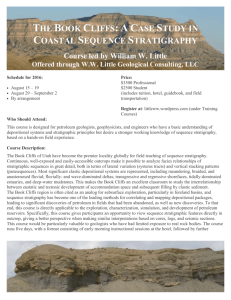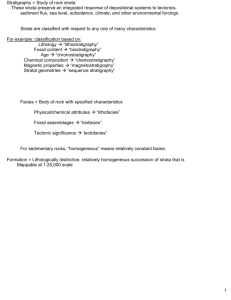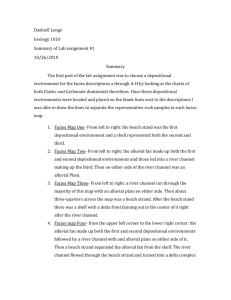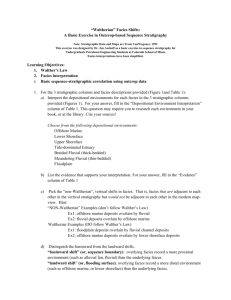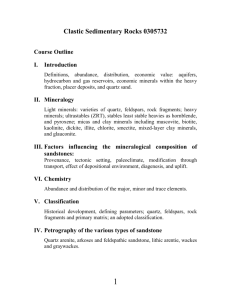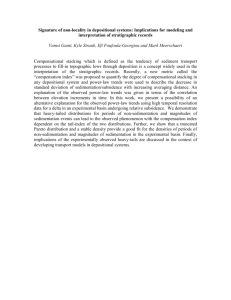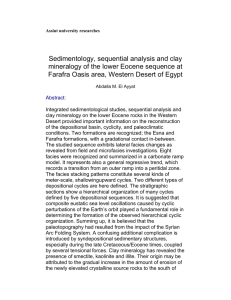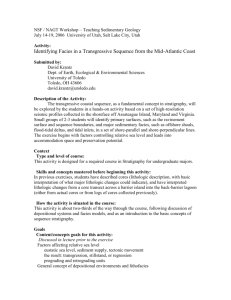Word
advertisement
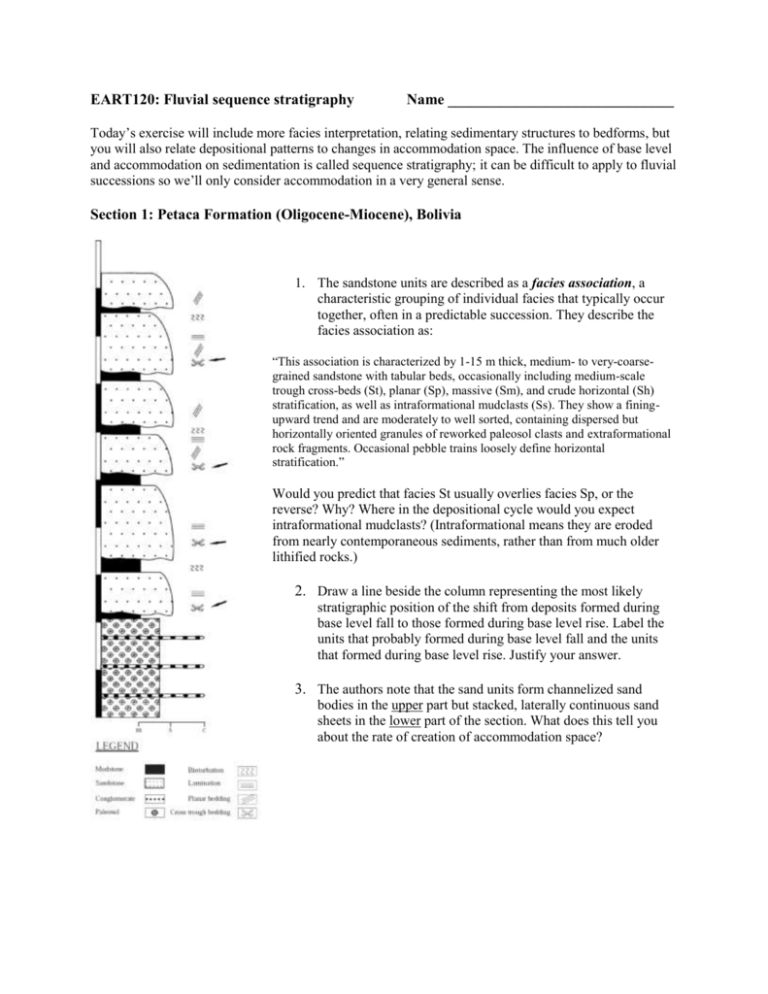
EART120: Fluvial sequence stratigraphy Name ______________________________ Today’s exercise will include more facies interpretation, relating sedimentary structures to bedforms, but you will also relate depositional patterns to changes in accommodation space. The influence of base level and accommodation on sedimentation is called sequence stratigraphy; it can be difficult to apply to fluvial successions so we’ll only consider accommodation in a very general sense. Section 1: Petaca Formation (Oligocene-Miocene), Bolivia 1. The sandstone units are described as a facies association, a characteristic grouping of individual facies that typically occur together, often in a predictable succession. They describe the facies association as: “This association is characterized by 1-15 m thick, medium- to very-coarsegrained sandstone with tabular beds, occasionally including medium-scale trough cross-beds (St), planar (Sp), massive (Sm), and crude horizontal (Sh) stratification, as well as intraformational mudclasts (Ss). They show a finingupward trend and are moderately to well sorted, containing dispersed but horizontally oriented granules of reworked paleosol clasts and extraformational rock fragments. Occasional pebble trains loosely define horizontal stratification.” Would you predict that facies St usually overlies facies Sp, or the reverse? Why? Where in the depositional cycle would you expect intraformational mudclasts? (Intraformational means they are eroded from nearly contemporaneous sediments, rather than from much older lithified rocks.) 2. Draw a line beside the column representing the most likely stratigraphic position of the shift from deposits formed during base level fall to those formed during base level rise. Label the units that probably formed during base level fall and the units that formed during base level rise. Justify your answer. 3. The authors note that the sand units form channelized sand bodies in the upper part but stacked, laterally continuous sand sheets in the lower part of the section. What does this tell you about the rate of creation of accommodation space? Section 2: Warchha Sandstone (Permian), Pakistan 4. Using arrows, draw the depositional cycles represented by each cycle of channel deposition and filling (note: these are not sequence stratigraphic depositional sequences). Draw an arrow extending from the base to the top of each cycle. Describe the basal contact of each cycle (abrupt or gradational, planar or erosive). 5. What type of river (braided or meandering) do you think is recorded in this stratigraphic succession? List the lines of evidence you used to make this deduction. 6. Is the rate of accommodation creation high or low? Note that the entire section will either be high- or low-accommodation as base-level cycles discussed in the video are usually much larger than the channel depositional cycles you identified in 4. What evidence supports your answer? 7. How do you think the rate of accommodation space changes from the base to the top of this section? Explain the evidence supporting that conclusion. Section 3: Dupi Tila Formation (Pliocene-Pleistocene), Bangladesh The symbols are the standard type (trough cross-stratification and ripples as in the previous column, the symbol around 9 m indicates plant material, and the dots at around 4 m indicates intermittent sandier layers in the siltstone). The clay-sized sediment with no pattern or symbols is structureless mudstone. 8. What type of river (braided or meandering) do you think is recorded in this stratigraphic succession? List the lines of evidence you used to make this deduction. 9. What depositional environment within the river system could the ripple laminated sands at 9.5 to 11 m in the section represent? The deposit is described as having a sharp base, thinning laterally, and grading laterally into the mudstone units. 10. Is the rate of accommodation space higher in this section or higher in section 2 (the Warchha Sandstone)? What supports that conclusion?


